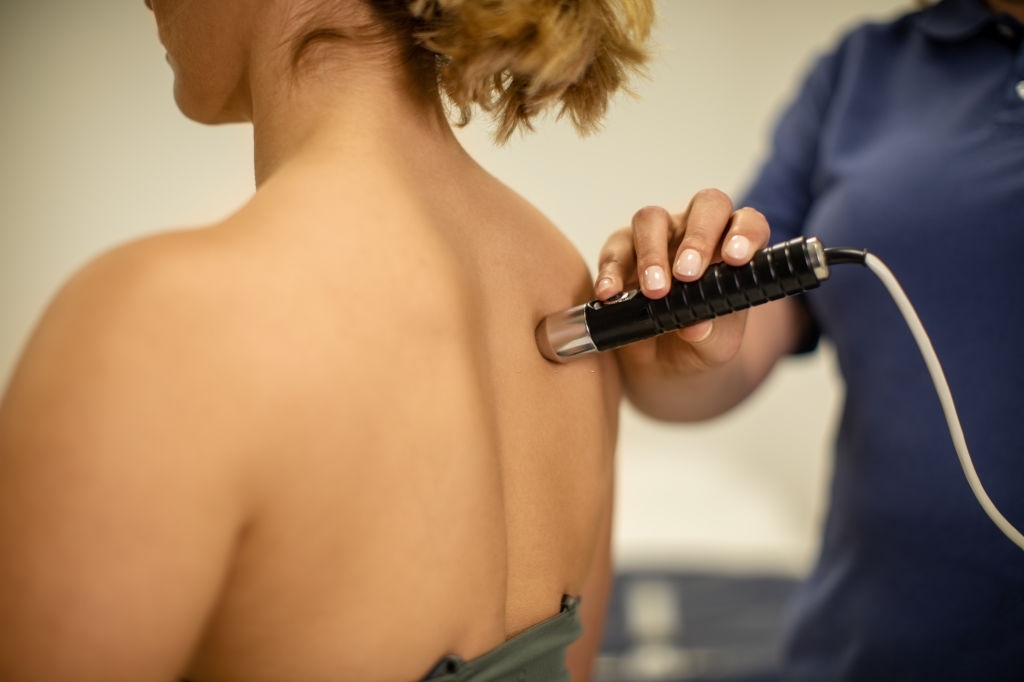
Laser Therapy
Laser therapies are medical treatments that use focused light. Unlike most light sources, light from a laser is tuned to specific wavelengths which allow surgeons to work at high levels of precision by focusing on a small area,
damaging less of the surrounding tissue.
Patients tend to experience less pain, swelling, and scarring
than with traditional surgery.
How Does Laser Therapy Work for Pain?
Laser therapy is a safe and effective solution to relieving pain and healing the body without invasive surgery or potentially harmful medications. Over 4,000 studies demonstrate the positive effects of laser therapy, and it’s earned approval from the Food and Drug Administration (FDA) to treat a range of conditions

Why Choose Laser Treatments for Pain Management?
Coping with pain can be a frustrating, time-consuming and sometimes risky experience. For example, turning to back surgery to relieve pain carries the risk of complications. Health experts recommend trying non-invasive treatments such as LLLT before agreeing to get an operation.
Patients who do not feel comfortable taking medications and who want an effective way to treat pain or inflammation might look toward LLLT.

Some Benefits of Laser Therapy
- Offers a cost-effective alternative to invasive surgeries
- Effectively reduces inflammation
- Accelerates tissue repair
- Increases blood flow
- Is safe and painless to use
- Features easy application
- Does not require the use of medicine
- Is free of side effects
- Has zero recovery time
- Is a quick, outpatient treatment
- Provides long-lasting relief
- Customizable to meet your needs
What Can You Treat With Laser Therapy?
- shrink or destroy tumors, polyps, or precancerous growths
- relieve symptoms of cancer
- remove kidney stones
- treat hair loss resulting from alopecia or aging
- treat pain, including back nerve pain
- remove warts, moles, birthmarks, and sun spots
- lessen the appearance of wrinkles, blemishes, or scars
- remove unwanted hair
- remove unwanted tattoos
How do I prepare for laser therapy?
Plan ahead to ensure that you have time to recover after the operation. Also make sure someone can take you home from the procedure. You will likely still be under the influence of anesthesia or medications.
A few days before the surgery, you may be advised to take precautions such as stopping any medications that can affect blood clotting, such as blood thinners
(1) refractive eye surgery (often called LASIK)
(2) tooth whitening
(3) cosmetic scar, tattoo, or wrinkle removal
(4)cataract or tumor removal
What happens after laser therapy?
Recovery after laser surgeries is similar to that of typical surgery. You may need to rest for the first few days after the operation and take over-the-counter pain medication until the discomfort and swelling have gone down. Recovery after laser therapy varies based on the type of therapy you received and how much of your body was affected by the therapy.
If you received therapy on your skin, you may experience swelling, itching, and rawness around the treated area. We ensure to use an ointment and dress up the area so that it’s airtight and watertight.
Once the area has become overgrown with new skin, you may use makeup or other cosmetics to cover up any noticeable redness if you’d like.
